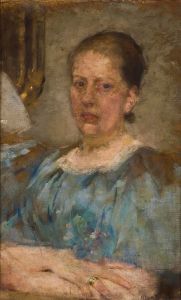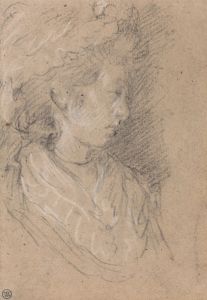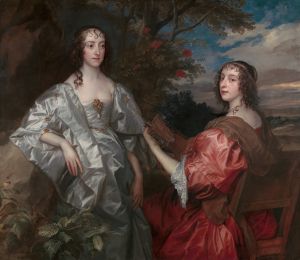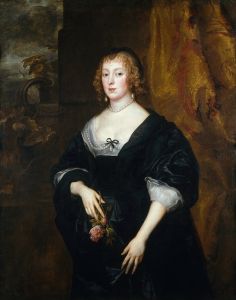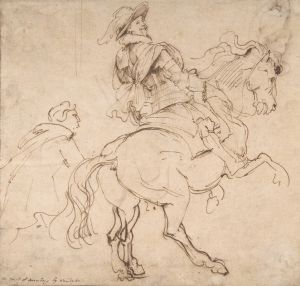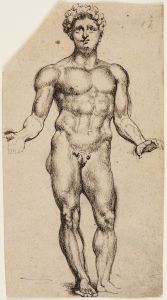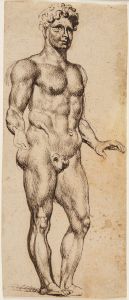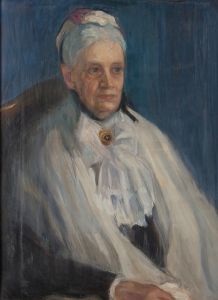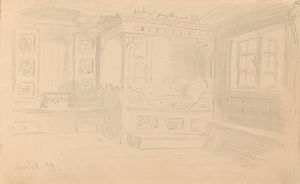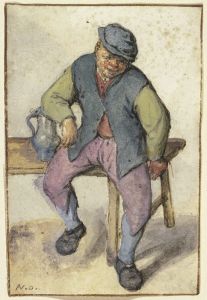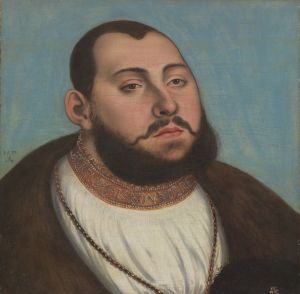
Portrait of a Flemish Lady
A hand-painted replica of Anthony van Dyck’s masterpiece Portrait of a Flemish Lady, meticulously crafted by professional artists to capture the true essence of the original. Each piece is created with museum-quality canvas and rare mineral pigments, carefully painted by experienced artists with delicate brushstrokes and rich, layered colors to perfectly recreate the texture of the original artwork. Unlike machine-printed reproductions, this hand-painted version brings the painting to life, infused with the artist’s emotions and skill in every stroke. Whether for personal collection or home decoration, it instantly elevates the artistic atmosphere of any space.
"Portrait of a Flemish Lady" is an artwork attributed to Anthony van Dyck, a prominent Flemish Baroque artist known for his portraits of European aristocracy and his influence on the English portrait tradition. Van Dyck was born in Antwerp in 1599 and became one of the most important painters of the 17th century. He was a leading court painter in England and is often remembered for his elegant and sophisticated style.
The painting "Portrait of a Flemish Lady" exemplifies van Dyck's skill in capturing the grace and poise of his subjects. His portraits are renowned for their psychological depth and the way they convey the status and personality of the sitter. In this particular work, van Dyck employs his characteristic use of soft, flowing lines and a delicate color palette to create a sense of refinement and dignity.
Van Dyck's technique often involved the use of a light underpainting, which allowed him to build up layers of translucent glazes. This method contributed to the luminous quality of his portraits, giving the skin tones a lifelike appearance. His attention to detail is evident in the rendering of fabrics and textures, which adds to the overall realism and richness of the painting.
The identity of the lady in the portrait is not definitively known, as is the case with many of van Dyck's works. However, the painting is believed to depict a member of the Flemish aristocracy, reflecting the artist's connections with the upper echelons of society. Van Dyck's ability to capture the elegance and sophistication of his sitters made him a sought-after portraitist among the nobility.
During his career, van Dyck traveled extensively, working in Italy, England, and the Southern Netherlands. His time in Italy exposed him to the works of Titian and other Renaissance masters, which influenced his approach to portraiture. In England, he served as the principal court painter to King Charles I, producing numerous portraits of the king and his family, as well as other members of the court.
"Portrait of a Flemish Lady" is a testament to van Dyck's mastery of portraiture and his ability to convey the subtleties of human expression. The painting is housed in a collection that appreciates the historical significance and artistic merit of van Dyck's work. It continues to be studied and admired for its contribution to the development of portrait painting in Europe.
Van Dyck's legacy is evident in the generations of artists who followed him, as his style and techniques were emulated and adapted by many. His influence extended beyond his lifetime, shaping the course of portraiture and leaving an indelible mark on the history of art.





